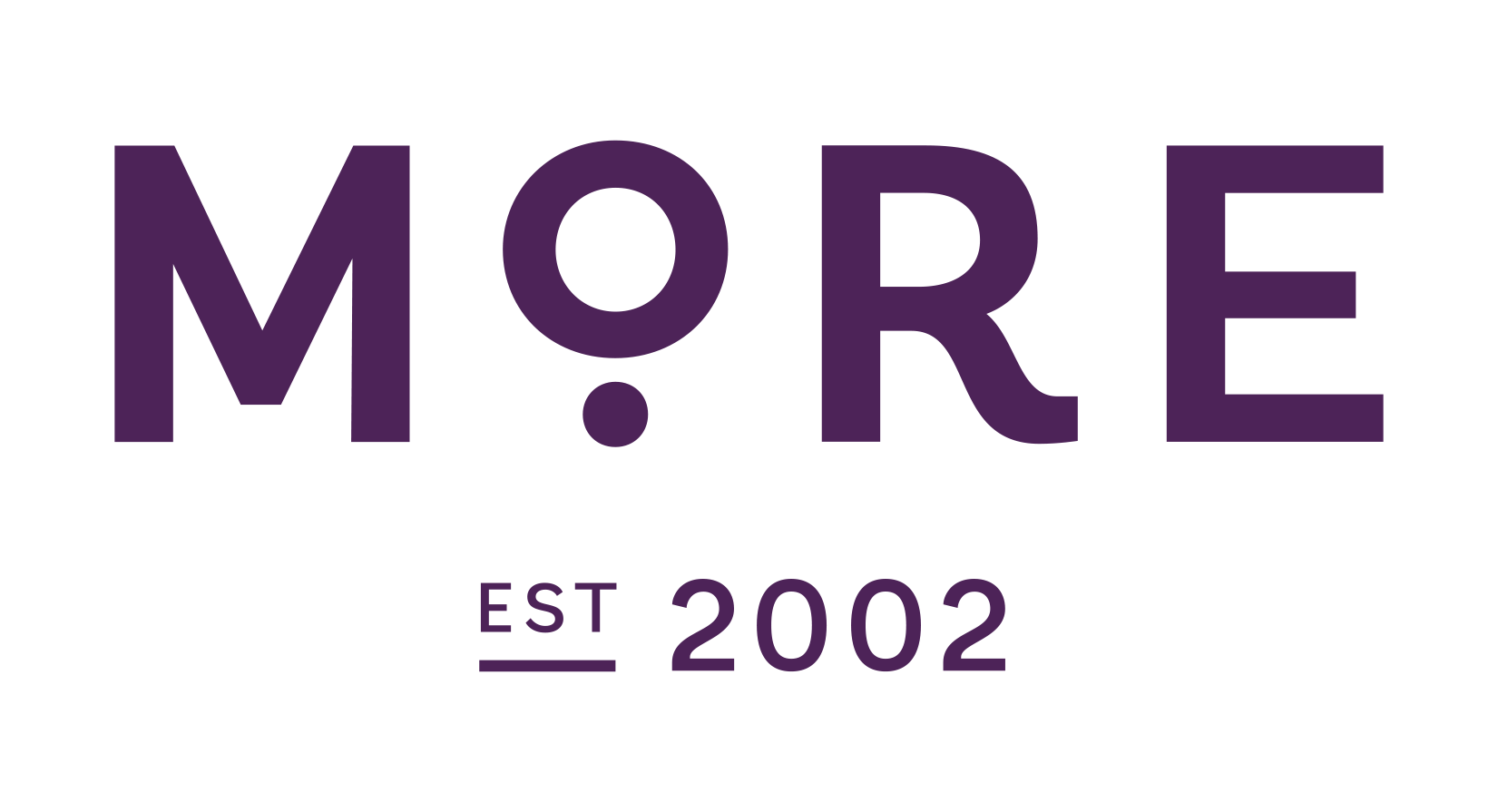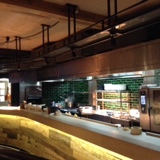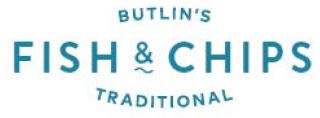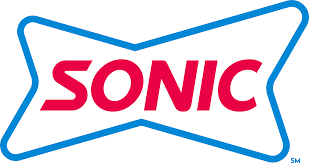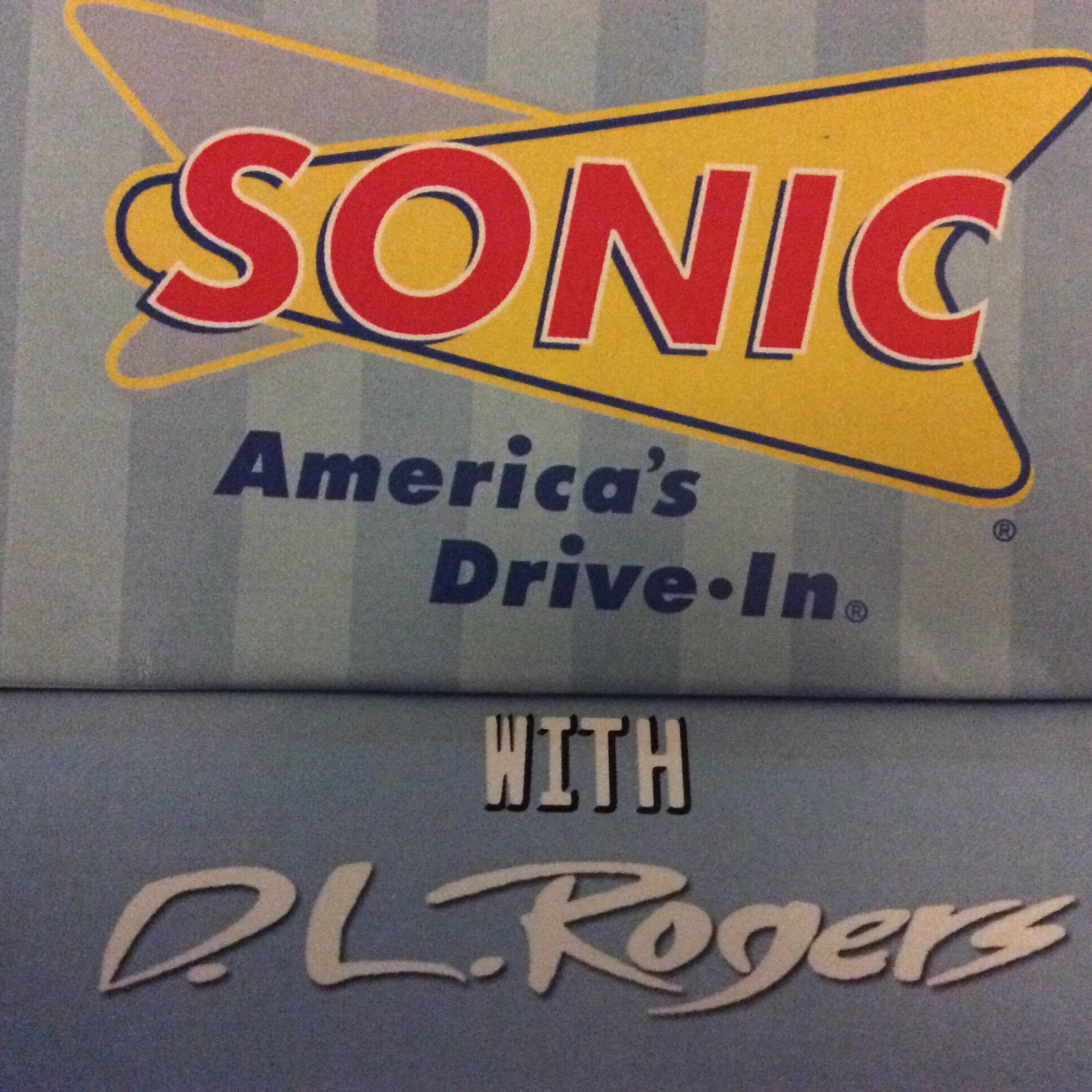Title Page
-
Location
-
Conducted on
-
Prepared by
A. FACILITIES
-
1 - STANDARD:
Design, layout and process flow should be suitable to prevent contamination of food. -
IS THE LAYOUT SUITABLE FOR THE TYPE OF THE OPERATION?
-
2 - STANDARD: Space and facility available for preparation, storage and transportation of food shall be sufficient and suitable to carry out the operations safely.
-
ARE SPACES AND FACILITIES SUFFICIENT AND SUITABLE FOR THE TYPE OF OPERATION?
-
3 - STANDARD: Layout approved by DM – prior approval shall be taken from the Food Control Department before constructing new food establishments and modifying the existing ones. Process flow within the establishment shall be suitable to prevent contamination of food.
-
IS THE LAYOUT AVAILABLE AND APPROVED BY DM?
-
4 - STANDARD: Trade License must be available and up-to-date.
-
IS THE TRADE LICENSE AVAILABLE AND UP-TO-DATE?
-
5 - STANDARD: Clear physical separation must be available in between raw preparation areas and ready to eat preparation areas.
-
IS THERE A PROPER SEGREGATION BETWEEN AREAS? <br>
-
6 - STANDARD: A proper area for receiving incoming goods must be available in order to protect received goods from any potential source of contamination.
-
IS A SUITABLE RECEIVING AREA AVAILABLE? <br>
-
7 - STANDARD: At least 2 scales shall be provided in establishments where raw and ready to eat foods are received. Scales must be well marked with “raw” and “ready-to-eat”.
-
ARE THERE 2 SCALES AVAILABLE AT THE RECEIVING AREA? <br>
-
8 - STANDARD: Service area for de-boxing and product inspection shall be suitable and sufficiently equipped.
-
IS A SUITABLE DE-BOXING AREA AVAILABLE? <br>
-
9 - STANDARD: Raw fruits and vegetables should be thoroughly washed in potable water to remove soil and other contaminants, disinfected when necessary, before being cut combined with other ingredients, cooked, served, or offered for human consumption in ready-to-eat form.
-
IS A SUITABLE PRE-WASH AREA AVAILABLE?
-
10 - STANDARD: Located outside the premises (when possible), suitable type and regularly inspected, the greasy waste should be promptly removed and the adjoining floor surfaces should be cleaned thoroughly afterwards.
-
IS A SUITABLE GREASE TRAP AVAILABLE AND PROPERLY MAINTAINED? <br>
-
11 - STANDARD: Designed and constructed in a way that is appropriate for the activities conducted. In dry areas the floor should be durable, impervious, easily cleanable, and non-slip, the floor to wall joints should be coved.
-
DOES THE FLOOR COMPLY WITH THE STANDARDS? <br>
-
12 - STANDARD - WALLS:
-
a - Can be kept clean.
-
b - In wet areas, walls should be constructed of an impervious material that is able to withstand regular washing.
-
c - In areas where open food is handled, internal surfaces of walls and partitions should be surfaced with smooth, preferably light colored, durable, non-absorbent and easily cleanable materials (e.g. tiles or stainless steel) to a height of not less than 2 Meters.The rest may be painted in a light-color.
-
d - Junctions between walls, partitions and floors should be coved.
-
e - Wall surfaces or ceilings should be clear of unnecessary fittings or decorations such as unnecessary posters or pictures as far as possible.
-
f - Junctions between walls, and between walls and ceilings, should be tightly sealed and maintained in good condition, and free from cracks, crevices, holes or gaps or flaking materials. Any holes or gaps that may allow access of pests to wall and ceiling cavities should be sealed up.
-
DO THE WALLS COMPLY WITH THE STANDARDS?
-
13 - STANDARD - CEILING:
-
a - Should be of continuous construction so that there are no empty spaces or wide joints.
-
b - The surfaces should allow ease of cleaning.
-
c - Should be of light color and fire proof.
-
d - False Ceiling if used in food handling areas should have:- Smooth, easily cleanable and impervious surfaces - Access openings to the space above false ceiling should be provided to facilitate cleaning and for detection of signs of pest infestation.
-
e - Constructed in a way that prevents accumulation of dirt.
-
f - Reduce condensation and subsequent growth of undesirable mold.
-
g - Junctions between walls, and between walls and ceilings, should be tightly sealed and maintained in good condition, and free from cracks, crevices, holes or gaps or flaking materials
-
DOES THE CEILING COMPLY WITH THE STANDARDS?
-
14 - STANDARD - DOORS:
-
a - Constructed in a way that prevent accumulation of dirt.
-
b - Threshold clearance of doors should be lowered to not more than 6 mm and metal kicking plates should be affixed at the lower edges of doors and door-frames to prevent entry of rats and mice.
-
c - Should be solid, self-closing tight-fitting and kept closed at all times.
-
- If kept open for ventilation or other purposes, the exterior openings should be protected against the entry of pests by means such as screens, properly designed and installed air curtains or other effective means to restrict the entry of pests.
-
DO DOORS COMPLY WITH THE STANDARDS?
-
15 - STANDARD - WINDOWS:
Constructed in a way that prevent accumulation of dirt. -
DO THE WINDOWS COMPLY WITH STANDARDS? <br>
-
16 - STANDARD - JOINTS:
Floors must be coved at the wall to floor joints, and sealed; this is not a requirement, it is a best practice. -
ARE THE JOINTS BETWEEN WALLS AND FLOORS COVED?
-
17 - STANDARD - AIR CURTAIN: If windows or doors are kept open for ventilation or other purposes, the exterior openings shall be protected against the entry of pests by means such as screens, properly designed and installed air curtains or other effective means to restrict the entry of pests.
-
ARE AIR CURTAINS AVAILABLE WHERE NEEDED? <br>
-
18 - STANDARD - EQUIPMENT: Suitable & sufficient depending on the type and extent of process.
-
ARE REQUIRED EQUIPMENT SUFFICIENT AND SUITABLE? <br>
-
19 - STANDARD - UTENSILS:
Sufficient equipment, utensils and other tools shall be available depending on the type and extent of process. -
ARE REQUIRED TOOLS AND UTENSILS SUFFICIENT AND SUITABLE?
-
20 - STANDARD - EQUIPMENT: Well designed, constructed of cleanable material, suitable for their intended use and properly installed, Operational, well maintained; cleaned after use; and stored in suitable, designated area.
-
ARE EQUIPMENT, TOOLS AND UTENSILS (Including shelving) IN GOOD QUALITY AND CONDITION?
-
21 - STANDARD - LIGHTING: Suitable and sufficient lighting shall be provided where necessary (intensity + cover).
-
IS LIGHTING SUITABLE AND SUFFICIENT?
-
22 - STANDARD - VENTILATION: Air quality and ventilation shall be adequate to prevent contamination, to keep food areas reasonably free of odor and condensation and to provide a comfortable working environment.
-
IS VENTILATION SUITABLE AND ADEQUATE? <br>
-
23 - STANDARD - FIRE EXTINGUISHER: Enough, suitable and safely displayed.
-
ARE FIRE EXTINGUISHERS ENOUGH AND SUITABLE? <br>
B. WATER/ICE
-
24 - STANDARD: Food, food prep areas, food storage areas or areas used by employees shall be protected from contamination of sewage or liquid waste.
-
ARE SEWAGE AND LIQUID WASTE SAFE? <br>
-
25 - STANDARD: Drainage and sewage systems shall be in good working order
-
ARE DRAINAGES AND SEWAGES IN GOOD CONDITIONS?
-
26 - STANDARD: Water that is consumed, used for ice production or used in contact with food shall be obtained from approved sources, potable and filtered when necessary (water treatment unit).
-
DOES WATER USED FOR FOOD AND ICE COME FROM A SAFE SOURCE?
-
27 - STANDARD: Water supply system including pipes, fixtures and water tanks shall be clean and in good repair.
-
IS THE WATER SUPPLY SYSTEM SUITABLE? <br>
-
28 - STANDARD: Water samples should be tested in an accredited lab to verify the efficiency of the water treatment unit - initially once a month and then the frequency gets reduced/ increased according to the lab results unless there is evidence of constant water tank cleaning by a water tank cleaning company approved by Food Control Department - Dubai Municipality - This microbiological water lab testing should include: TPC (Total Plate Count), HPC (Heterotrophic Plate Count) and Total coliforms.
-
IS WATER MICROBIOLOGICAL TESTING ROUTINELY CONDUCTED?
-
29 - STANDARD: Ice should be made, handled and stored under conditions that protect it from contamination.
-
ARE ICE MACHINES SUITABLE AND WELL MAINTAINED? <br>
C - MEASURING EQUIPMENT CALIBRATION (thermometers, scales, pH meters, frying oil tester)
-
30 - STANDARD - THERMOMETER
-
a - Equipment or instruments used for measuring or monitoring products or processes that could have an impact on product safety or legality should be calibrated or standardized to a standard recognized by the Food Control Department. The calibration or standardization should be done internally or externally at a pre-determined frequency necessary to ensure proper functioning of the equipment.
-
b - Calibration of hand held thermometers can be done in-house without the need for Calibration Company.
-
ARE ALL THERMOMETERS ROUTINELY CALIBRATED?
-
31 - STANDARD - SCALE Applicable for establishments weighing chemical additives (preservatives, colorants, bleaching agents etc.)
-
ARE ALL SCALES ROUTINELY CALIBRATED?
-
32 - STANDARD - PH METERS PH meters shall be calibrated following the procedure and frequency set by the manufacturer; valid for sushi preparations only
-
ARE PH METERS AVAILABLE AND ROUTINELY CALIBRATED?
D - PERSONAL HYGIENE
-
33 - STANDARD - HAND WASHING FACILITIES Shall be conveniently located, well maintained, clean and provided with sufficient flow of running water, liquid soap and drying towels
-
ARE HAND WASHING FACILITIES AVAILABLE AND SUITABLE?
-
34 - STANDARD: Clean, well groomed and wear appropriate protective clothing
-
IS THE PERSONAL HYGIENE STANDARD OF STAFF ACCEPTABLE?
-
35 - STANDARD - HYGIENE BEHAVIOR
-
a. Inside food preparation areas, food handlers should refrain from performing the following behaviors/habits which may result in contamination of food:
-
- Smoking or using tobacco and spitting;
-
- Chewing, eating, sneezing or coughing over unprotected food or food contact surfaces
-
- Touching ready-to-eat food with bare hands
-
- Sitting, lying or standing on any surface liable to come into contact with food
-
- Tasting food with fingers
-
- Touching hair or other parts of bodies such as noses, eyes or ears
-
- Dining inside food preparation area.
-
b. Access to food preparation areas should be restricted, as much as practically possible, to designated people. Where necessary, food handlers shall use proper utensils and methods to avoid direct bare hand contact with RTE food.
-
DOES THE STAFF ADOPT GOOD HYGIENE BEHAVIOR AND HABITS?
-
36 - STANDARD - OCCUPATIONAL HEALTH CARDS: Cards shall be valid and available for inspection
-
ARE STAFF OCCUPATIONAL CARDS VALID AND AVAILABLE?
-
37 - STANDARD:
Employees shall be free from illness and shall not work with open injuries. Wound dressings shall be clean and waterproof -
DO EMPLOYEES SHOW SIGNS OF ILLNESS?
-
38 - STANDARD: Occurrences of suspected food borne illness shall be reported to DM
-
DOES THE ESTABLISHMENT REPORT CUSTOMERS' SUSPECTED FOOD BORNE ILLNESSES TO DM?
-
39 - STANDARD: The food establishment shall maintain a documented food borne illness reporting system
-
IS A SUITABLE ACCIDENT AND ILLNESS REPORTING PROCEDURE AVAILABLE AND IMPLEMENTED?
-
40 - STANDARD: First Aid facility must be available in order to ensure that food handlers with clean cuts / wounds can work if the cuts are completely protected by brightly colored (preferably blue), waterproof dressings that can be spotted easily if fallen in to the food.
-
IS A SUITABLE FIRST AID FACILITY AVAILABLE? <br>
-
41 - STANDARD: Employees shall have easy access to facilities such as toilets, changing rooms. Such facilities shall be well maintained, properly ventilated and clean
-
ARE SUITABLE TOILETS AND CHANGING ROOMS AVAILABLE?
-
42 - STANDARD: Toilets shall be maintained clean and in good conditions
-
ARE CUSTOMERS TOILETS CLEAN AND IN GOOD CONDITION?
-
43 - STANDARD - STAFF EATING AREA As it is strictly forbidden to eat in the food preparation area, it is mandatory to provide a separate canteen for the employees or to allocate an eating area away from food preparation.
-
IS A SUITABLE SEPARATE AREA FOR EATING AND RESTING AVAILABLE? <br>
-
44 - STANDARD - HAND WASHING Food handlers shall follow good hygiene practices including proper hand washing
-
ARE FOOD HANDLERS ABLE TO DEMONSTRATE PROPER HAND WASHING?
E - CLEANING AND DISINFECTION
-
45 - STANDARD: Food contact surfaces shall be well maintained, cleaned and disinfected properly
-
ARE ALL AREAS AND SURFACES CLEAN?
-
46 - STANDARD: A cleaning program stating approved materials and methods shall be followed for cleaning and disinfection; it shall include suitable materials, recommended water temperature, concentration and contact time as per available MSDS
-
IS A SUITABLE CLEANING PROGRAM AVAILABLE?
-
47 - STANDARD: Cleaning Monitoring and recording procedures must be available as they are very important for the implementation of proper Food Safety Management Systems.
-
IS CLEANING PROPERLY MONITORED AND DOCUMENTED?
-
48 - STANDARD - CHEMICALS
-
a. Chemicals used for cleaning and disinfection/sanitizing must be suitable for use in food establishments and be approved by the relevant department of Dubai Municipality. The establishment should determine the appropriate cleaning method in consultation with the supplier of chemical service provider.
-
b. Detergents used for cleaning food contact surfaces should be appropriate for the task and be able to effectively remove food residues on equipment and utensils.
-
c. Material Safety Data Sheet (MSDS) along with the documents of validation pertaining to the
suitability and effectiveness of the chemical and/or the process of disinfection /sanitizing should be retained in the food establishment at all times. -
d. The documents should include validation data with the following details:
-
- Evidence that the chemicals are suitable for the tasks being carried out;
-
- Evidence that the chemicals will be effective against pathogens of concern;
-
- Evidence that the chemical is suitable for use in food establishments
-
48- ARE APPROVED CLEANING AND DISINFECTING CHEMICALS BEING USED?
-
49 - STANDARD: Sufficient facilities should be available to mechanically or manually clean, disinfect and dry food contact equipment and surfaces
-
ARE PROPER CLEANING FACILITIES AND TOOLS AVAILABLE? <br>
-
50 - STANDARD: Hazardous substances, lubricants and chemicals such as cleaning materials and pesticides shall be approved for the intended use, properly labeled and stored securely in a way that prevents contamination of food and food contact surfaces
-
ARE CLEANING CHEMICALS PROPERLY STORED?
F - PEST MANAGEMENT
-
51- ANY VISIBLE SIGNS OF PEST INFESTATION NOTICED DURING THE INSPECTION?
-
52 - STANDARD: Pest control operations shall be carried out by an approved pest control
-
IS A PEST CONTROL CONTRACT AVAILABLE?
-
53 - STANDARD: Must be provided by the Pest Control Contractor and must include the MSDS (Material Safety Data Sheets) for all chemicals used as well as the application schedule, rodents traps map and contractors recommendations after visits, (including maps of rodent traps)
-
ARE PEST CONTROL DOCUMENTS AVAILABLE?
-
54 - STANDARD: Electric Fly Killers (EFKs) equipped with catch trays can be used to eliminate flying insects in food premises. The EFK should be placed at least 1.5m (preferably 4.5 – 6 m) away from a food handling area. Only low wall or ceiling mounted type EFKs should be.
-
ARE SUITABLE FLY KILLERS AVAILABLE ?
G - WASTE MANAGEMENT
-
55 - STANDARD: Waste containers or receptacles shall be suitably designed, adequate in number, frequently emptied and clean. External containers shall be insect and rodent proof
-
ARE SUITABLE WASTE ROOM/RECEPTACLES AVAILABLE OUTSIDE?
-
56 - STANDARD: Waste containers and receptacles shall be suitably designed, adequate in number, frequently emptied and clean
-
ARE SUITABLE WASTE BINS AVAILABLE IN THE KITCHEN?
-
57 - STANDARD: The flow of waste must be designed in a way to avoid the contamination of food products and surfaces with waste containers.
-
IS THE FLOW OF WASTE SUITABLE?
H - PREPARATION AND HANDLING
-
1 - PURCHASING & RECEIVING
-
58 - STANDARD: Food shall be obtained from approved sources with proper records and inspected upon arrival
-
IS A SUITABLE APPROVED SUPPLIERS LIST AVAILABLE?
-
59 - STANDARD - RECEIVING:
-
a. Inspection should be carried out at the time of receipt of food from the supplier to ensure that:
-
- Food and packaging are free from visible damage, pests and other contaminants; and that they are protected from contamination.
-
- Food is in an appropriate condition for intended use;
-
- Food is accompanied by appropriate documentation;
-
- Transport is suitable, and approved by concerned food authority
-
- Foods that require temperature control for safety are to be delivered at adequate temperatures.
-
- Food items should be properly labeled – ingredient listing, date coding etc.
-
- If the food is pre-packaged, the time gap between the date of receiving and expiration date should be sufficient to use the product and avoid wastage of stock.
-
- Unacceptable food should be returned and documented
-
- Food products should be quickly moved into storage after the inspection.
-
b. Receipt of high-risk foods should be monitored to ensure that proper temperatures are maintained during their transportation, storage and distribution. Products and records should be checked at the time of receiving and nonconforming products should not be accepted.
-
ARE RECEIVING PROCEDURES PROPERLY FOLLOWED AND DOCUMENTED?
-
2 - STORING
-
60 - STANDARD: Relative humidity shall be suitable for storage of dry food
-
IS THE RELATIVE HUMIDITY IN THE DRY STORE SUITABLE?
-
61 - STANDARD: Food must be stored 15 cm off the floor and away from walls
-
IS FOOD PROPERLY STORED ON THE SHELVES ?
-
62 - STANDARD: Non food materials that come into contact with food such as packaging, storage containers, wraps, covers etc shall be non toxic and made of food grade materials approved by DM
-
ARE SUITABLE FOOD STORAGE CONTAINERS/PACKAGES AVAILABLE?
-
63 - STANDARD: Raw or unprocessed food shall be kept separate from ready-to-eat foods – food shall be protected from risk of contamination during preparation, storage and transportation
-
IS THERE A PROPER SEGREGATION BETWEEN RAW FOODS AND HIGH-RISK FOODS? <br>
-
64 - STANDARD: Food should be stored in suitable and safe containers and stored covered- food shall be protected from risk of contamination during preparation, storage and transportation
-
IS STORED FOOD PROPERLY COVERED AND WRAPPED?
-
3 - STOCK ROTATION
-
65 - STANDARD:
-
a. All food products received at a food premise should be properly packaged and labeled.
-
b. Refrigerated ready-to-eat high-risk foods, prepared and held for more than 6 hours, should be marked with the expiration time or date.
-
c. Foods stored without temperature control (cold or hot high-risk food intended for immediate consumption) should be clearly labeled with the time of expiration to indicate the time when the food has to be discarded.
-
IS STORED FOOD PROPERLY LABELED? (name/production/expiry)
-
66 - STANDARD:
Shelf life policies and labeling of food items that are prepared on-site, and opened commercially packed food container shall comply with the food code and the food safety/HACCP plan -
IS THE SHELF LIFE OF FOOD ITEMS COMPLIANT WITH THE REQUIREMENTS?
-
67 - STANDARD: Expired, returned or recalled food unfit for human consumption shall be clearly identified and stored separately from foods intended for consumption
-
ANY EXPIRED/UNFIT FOODS FOUND?
-
4 - TEMPERATURE CONTROL AND MONITORING PROCEDURES
-
68 - STANDARD: Cold food shall be held below 5*C except during preparation
-
IS A SUITABLE COLD HOLDING PROCEDURE AVAILABLE AND IMPLEMENTED?
-
69 - STANDARD: Hot food items shall be held at or above 60C
-
IS A SUITABLE HOT HOLDING PROCEDURE AVAILABLE AND IMPLEMENTED?
-
70 - IS FOOD TEMPERATURE CONTROL PROCEDURE AVAILABLE AND IMPLEMENTED?
-
5 - PREPARATION OF RAW READY TO EAT FOOD
-
71 - STANDARD: Raw ready to eat foods such as vegetables used for salad should be washed and disinfected prior to use
-
IS A SUITABLE FRESH PRODUCE WASHING AND SANITIZING PROCEDURE AVAILABLE AND IMPLEMENTED? <br>
-
72 - STANDARD: Pasteurized eggs shall be used in recipes if eggs are to be undercooked; or are combined unless: cooked to order and immediately served; used immediately before thoroughly cooking
-
IF ANY EGG BASED FOOD ITEM IS SERVED RAW OR UNDERCOOKED ARE PASTEURIZED EGGS BEING USED?
-
6 - HOUSEKEEPING PROCEDURES.
-
73 - STANDARD:
-
a. All paper towels must be stored in their proper dispensers to avoid their contamination.
-
b. All equipment and tools must be cleaned, disinfected, dried then stored in their proper storages after each use, the Clean As You Go must be constantly followed by all employees and enforced by the PICs and the Supervisors.
-
ARE GOOD STANDARDS OF HOUSEKEEPING AVAILABLE? (In dry store, fridges, freezers)
-
7 - SEGREGATION PROCEDURES
-
74 - STANDARD:
-
a. Separately marked or color Coded cutting boards and knives should be used for the preparation of:
-
- Ready to eat foods- Raw, ready to eat animal and seafood (e.g.. Fish for Sushi);
-
- Raw vegetable foods intended to be cooked.- Raw animal foods intended for cooking.
-
b. When high-risk food production areas are very close to potentially contaminated raw food areas such as butchery, produce cleaning area etc., tools should be color coded to restrict the use of tools of a certain color to a specific area.
-
IS A SUITABLE COLOR CODING SYSTEM AVAILABLE AND IMPLEMENTED? (Cutting boards, knives, storage containers/crates...)
-
8 - FOOD SAFETY COMMUNICATION AND AWARENESS PROCEDURES
-
75 - STANDARD: Signages must be available in all sections to identify the usage of the sections
-
ARE SUITABLE CHARTS AND SIGNAGES AVAILABLE IN THE FACILITY WHERE REQUIRED?
-
76 - STANDARD: Raw, cooked or prepared food suspected to be contaminated, adulterated or unsuitable for consumption shall be identified clearly and discarded
-
IS A SUITABLE PROCEDURE FOR IDENTIFYING UNFIT FOOD AVAILABLE AND IMPLEMENTED? (Label/ return/discard...)
-
77 - STANDARD: Commercially processed and packaged food should be labeled with sufficient information and date marked as per the relevant standard (for factories)
-
IS A SUITABLE PROCEDURE FOR LABELLING COMMERCIALLY PROCESSED FOODS (IF ANY) AVAILABLE AND IMPLEMENTED?
-
9 - THAWING PROCEDURES
-
78 - STANDARD: Frozen food shall be thawed properly and used as per approved procedures
-
IS A SUITABLE PROCEDURE FOR THAWING FROZEN FOODS AVAILABLE AND IMPLEMENTED?
-
10 - COOKING PROCEDURES
-
79 - STANDARD: Raw animal products that are sold as cooked or pasteurized shall be cooked to a required minimum internal temperature of 75C or equivalent
-
IS A SUITABLE PROCEDURE FOR MONITORING THE TEMPERATURE OF COOKED FOOD AVAILABLE AND IMPLEMENTED?
-
11 - COOLING PROCEDURES
-
80 - STANDARD: Food shall be cooled by an approved method whereby the internal temperature is reduced from 60C to 20C or less within 2 hours, and from 20C to 5% or less within 4 additional hours
-
IS A SUITABLE PROCEDURE FOR COOLING HOT FOOD AVAILABLE AND IMPLEMENTED? (validation and monitoring)
-
81 - STANDARD:Food prepared from ingredients at ambient temperature shall be cooled to 5C within 4 hours
-
IS A SUITABLE PROCEDURE FOR COOLING AMBIENT TEMP FOOD AVAILABLE AND IMPLEMENTED? (validation and monitoring)
-
12 - REHEATING PROCEDURES
-
82 - STANDARD: Hot food items that have been cooked and refrigerated shall be held for service after being reheated rapidly to 75C
-
IS A SUITABLE PROCEDURE FOR REHEATING FOOD AVAILABLE AND IMPLEMENTED? <br>
J - DISPOSAL OF UNFIT FOOD
-
83 - STANDARD: unprotected high-risk food shall not be reserved
-
IS A SUITABLE PROCEDURE FOR THE DISPOSAL OF UNFIT FOOD AVAILABLE AND IMPLEMENTED?
K - TRANSPORTATION PROCEDURES (cars, trucks, bikes, etc.)
-
84 - STANDARD: Food shall be transported in suitable vehicles approved by DM – check the license
-
ARE DELIVERY VEHICLES APPROVED AND IN GOOD WORKING CONDITION?
L - TRACEABILITY AND RECALL PROCEDURES (ONLY FOR CENTRAL KITCHENS AND FACTORIES)
-
85 - STANDARD: Where applicable, product traceability and recall procedures shall be documented and followed
-
IS A SUITABLE PROCEDURE FOR FOOD TRACEABILITY AND RECALL AVAILABLE AND IMPLEMENTED?
M- NON-HALAL FOOD (FOR ESTABLISHMENTS SELLING/USING NON-HALAL FOOD)
-
86 - STANDARD: Preparation, storage, distribution and display of non-halal foods shall be carried out in a way that does not affect the integrity of halal foods
-
IS A SUITABLE PROCEDURE FOR HANDLING NON-HALAL FOOD AVAILABLE AND PROPERLY IMPLEMENTED?
-
87 - STANDARD: The establishment shall not sell, prepare or distribute non-halal foods without a valid permit from the Food Control Department
-
IS THERE A VALID NON-HALAL HANDLING PERMIT?
N - FOOD SAFETY MANAGEMENT PROGRAM
-
88 - STANDARD: Certified PIC shall be present during all hours of operation, and shall actively manage and supervise the operations
-
ARE QUALIFIED PICs AVAILABLE IN THE FACILITY?
-
89 - STANDARD: PIC smart checklist shall be filled on daily basis
-
IS THE PIC CHECKLIST BEING FILLED ON DAILY BASIS IF THE FOOD WATCH IS NOT YET FULLY ACTIVATED?
-
90 - STANDARD: The establishment shall effectively implement an approved food safety management program
-
IS AN APPROVED FOOD SAFETY MANAGEMENT SYSTEM AVAILABLE AND IMPLEMENTED?
-
91 - STANDARD: Records and documents shall be maintained to demonstrate Food safety/HACCP plan has been properly implemented (if HACCP plan exists as per Food Code).
-
IS A SUITABLE DOCUMENTATION AND RECORD KEEPING SYSTEM AVAILABLE AND IMPLEMENTED?
-
92 - STANDARD:
All employees shall successfully complete relevant food hygiene training programs and be able to demonstrate their knowledge -
ARE ALL EMPLOYEES TRAINED TO THE LEVEL REQUIRED BY LOCAL AUTHORITIES?
-
93 - STANDARD: A training log must be available and up-to-date
-
IS A SUITABLE TRAINING LOG AVAILABLE AND UP-TO-DATE?
O - ALLERGENS MANAGEMENT SYSTEM IN PLACE
-
94 - STANDARD:
-
a. Food service establishments must declare the most common ingredients known to cause allergenic reactions when they are present in the food that is prepared or sold in the establishment.
-
b. When following ingredients are contained in food–whether as an ingredient, compound ingredient, food additive or processing aid–they must be declared on the label or the menu, no matter how small the amount:
-
- Crustaceans and their products (e.g. prawns);
-
- Peanuts and their products;
-
- Soybeans and their products;
-
- Tree nuts and their products;
-
- Sesame seeds and their products;
-
- Fish and fish products;
-
- Egg and egg products;
-
- Milk and milk products;
-
- Gluten and cereals containing gluten (wheat, rye, oats, barley and spelt).
-
c. If such foods are packaged or re-packaged, the food establishment must list the presence of these substances in the ingredient list on the label.
-
d. Where the food is prepared for immediate consumption and is exempt from labeling, the required allergen information must either be displayed on, or provided to the purchaser upon request
-
ARE ALLERGENS CLEARLY DECLARED ON LABELS OR MENU?
-
95 - STANDARD - HANDLING ALLERGENS:
-
a. Not using the same cooking equipment (such as deep fryers, grills, sandwich makers)
-
- Not storing allergen ingredients with or near non-allergen ingredients (such as in the same refrigerator, storage shelf)
-
- Not handling allergen free food before washing hands and contact surfaces properly
-
b. Retail food service establishments such as restaurants, cafés, cafeterias and coffee shops that offer allergen free food shall check all ingredient labels of food products used in the production of food products for the presence of common food allergens. Handling of such products should be specifically included in the food safety programs.
-
c. Food establishments that offer allergen free food should verify the accuracy of the ingredient declarations on the product labels, and the implementation of suitable prerequisite controls such as separation and cleaning to prevent allergen contamination
-
IS THE FACILITY SAFE TO HANDLE ALLERGEN FREE FOOD (IF ANY IS BEING PREPARED AND SERVED?
-
96 - STANDARD: Food service establishment that offers allergen free food should have at least one competent person on every shift available to deal with customers who are allergic to certain types of food
-
IS THERE A PERSON COMPETENT TO DEAL WITH ALLERGIC CUSTOMERS?
P- MENU
-
97 - STANDARD: Food service establishments such as restaurants and cafeteria shall have product menu printed both in Arabic and English.
-
IS THE MENU AVAILABLE IN ENGLISH AND IN ARABIC?
